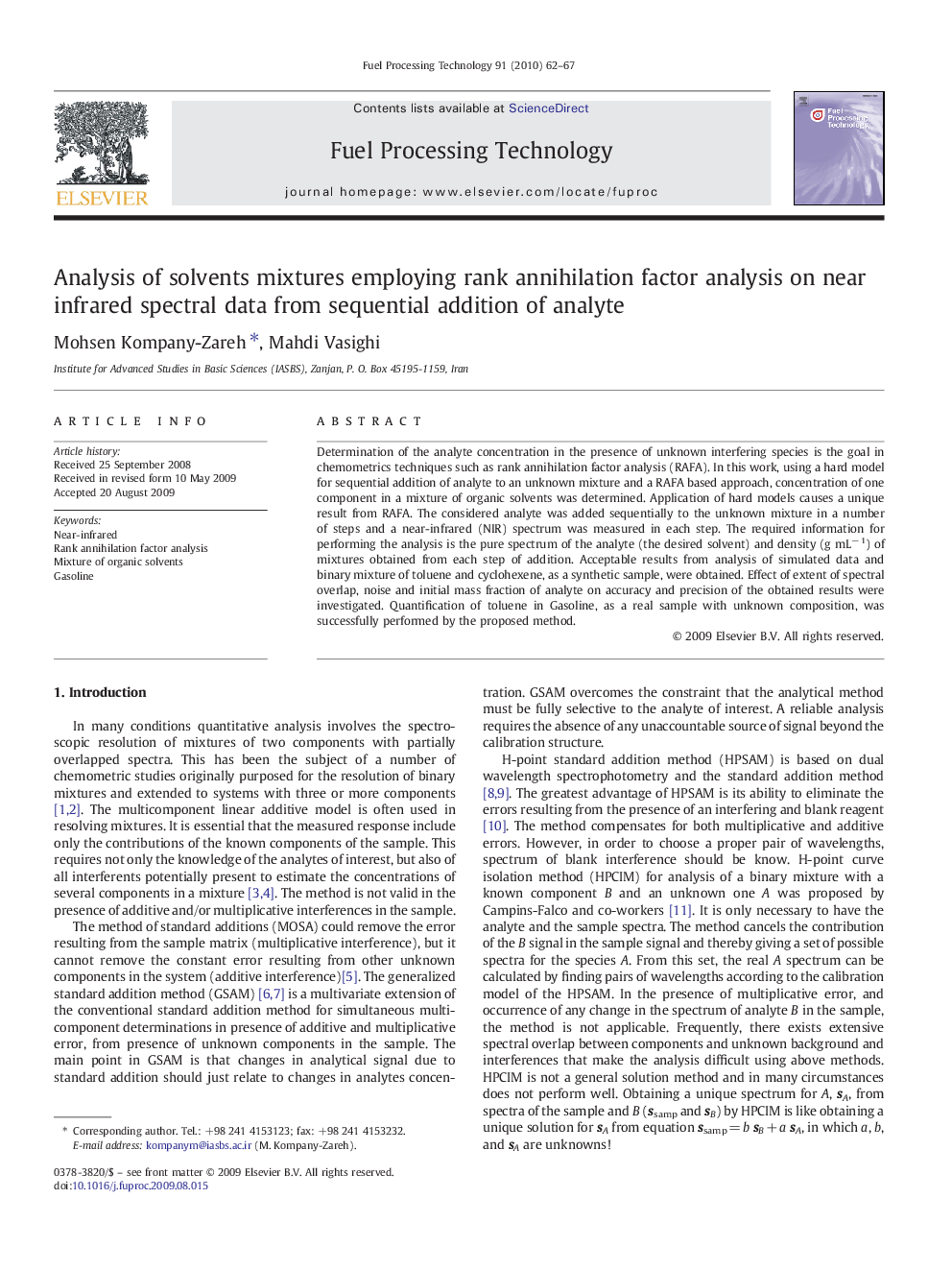| Article ID | Journal | Published Year | Pages | File Type |
|---|---|---|---|---|
| 211201 | Fuel Processing Technology | 2010 | 6 Pages |
Determination of the analyte concentration in the presence of unknown interfering species is the goal in chemometrics techniques such as rank annihilation factor analysis (RAFA). In this work, using a hard model for sequential addition of analyte to an unknown mixture and a RAFA based approach, concentration of one component in a mixture of organic solvents was determined. Application of hard models causes a unique result from RAFA. The considered analyte was added sequentially to the unknown mixture in a number of steps and a near-infrared (NIR) spectrum was measured in each step. The required information for performing the analysis is the pure spectrum of the analyte (the desired solvent) and density (g mL− 1) of mixtures obtained from each step of addition. Acceptable results from analysis of simulated data and binary mixture of toluene and cyclohexene, as a synthetic sample, were obtained. Effect of extent of spectral overlap, noise and initial mass fraction of analyte on accuracy and precision of the obtained results were investigated. Quantification of toluene in Gasoline, as a real sample with unknown composition, was successfully performed by the proposed method.
